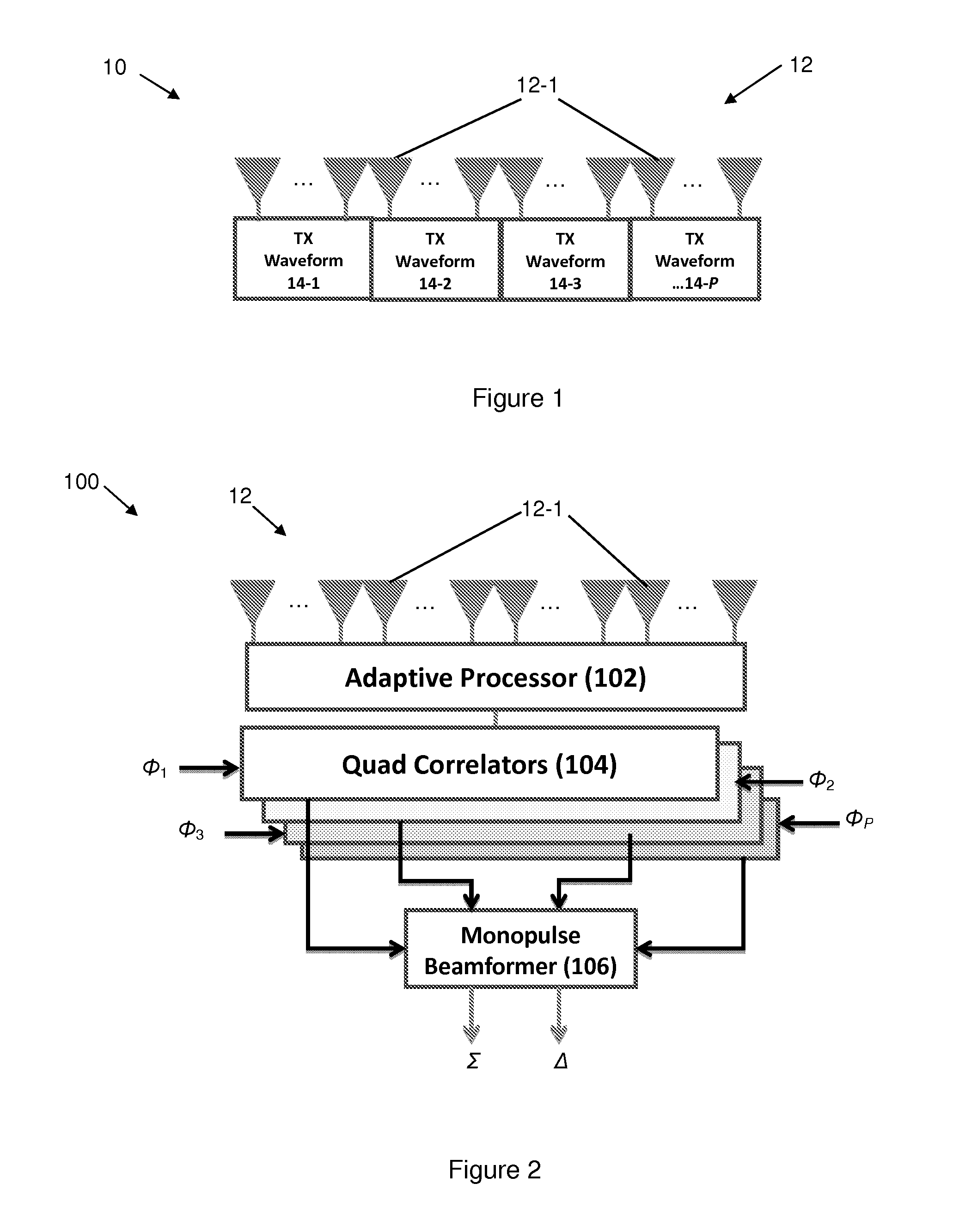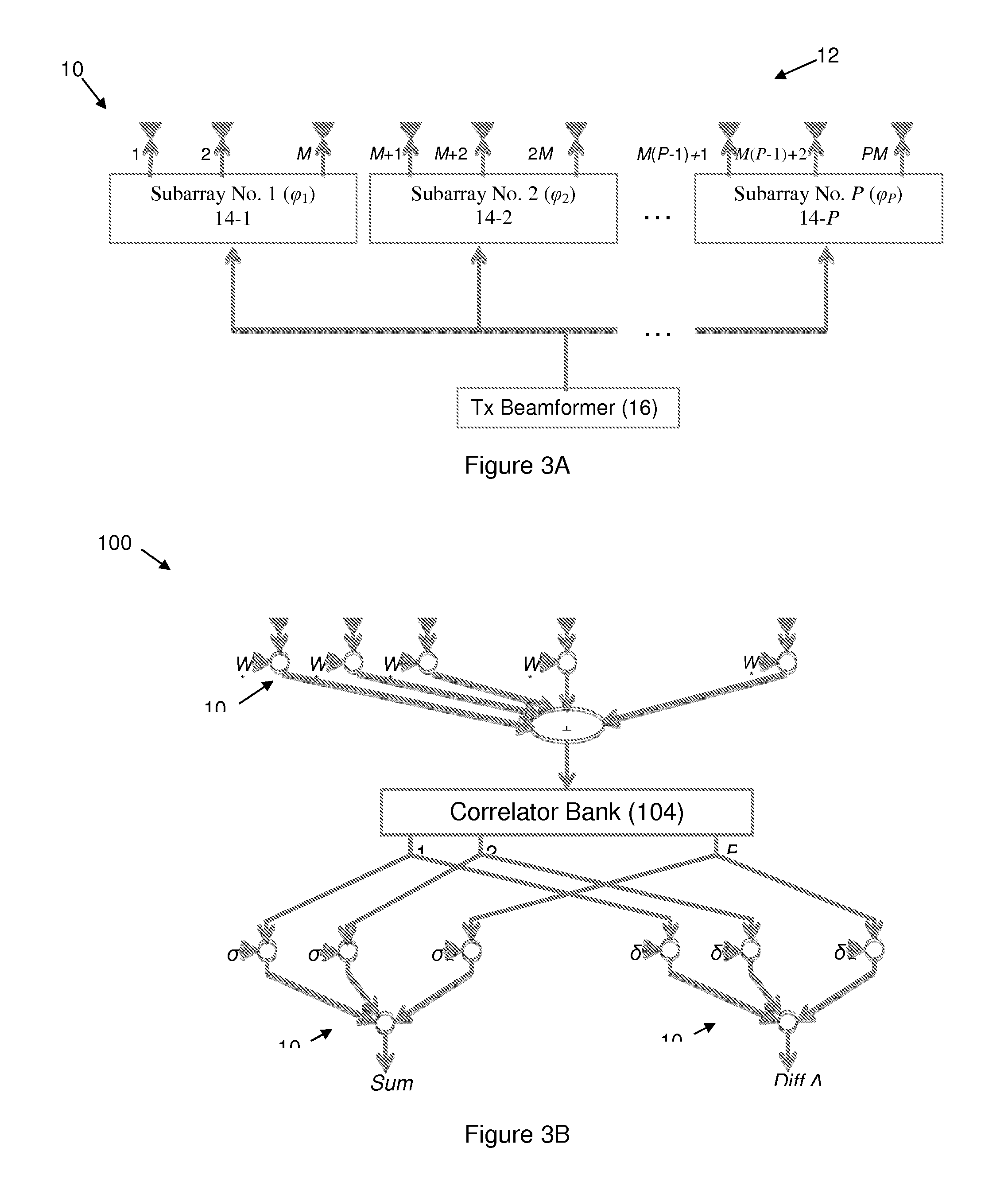MIMO angle estimation with simultaneous mainlobe jammer cancellation
a mainlobe and estimation technology, applied in the field of radar techniques, can solve the problems of limiting monopulse accuracy, lobe jamming, and reducing the accuracy of monopulse, and achieve the effect of suppressing jamming and sufficient target signal strength
- Summary
- Abstract
- Description
- Claims
- Application Information
AI Technical Summary
Benefits of technology
Problems solved by technology
Method used
Image
Examples
Embodiment Construction
[0026]Reference will now be made in detail to the present exemplary embodiments of the invention, examples of which are illustrated in the accompanying drawings. Wherever possible, the same reference numbers will be used throughout the drawings to refer to the same or like parts. An exemplary embodiment of the receiver of the present invention is shown in FIG. 2, and is designated generally throughout by reference numeral 100.
[0027]As embodied herein, and depicted in FIG. 1, a diagrammatic depiction of a transmitter 10 in accordance with the present invention is disclosed. A Multiple Input Multiple Output (MIMO) waveform diversity radar architecture is shown in FIG. 1. The antenna 12 includes a plurality of antenna elements 12-1. These antenna elements 12-1 are divided among a plurality of subapertures 14-1 . . . 14-P, where P is an integer. The term subarray is often used in place of the term subaperture. Each subarray 14 is configured to transmit an orthogonal signal (φ1-φP). As t...
PUM
 Login to View More
Login to View More Abstract
Description
Claims
Application Information
 Login to View More
Login to View More - R&D
- Intellectual Property
- Life Sciences
- Materials
- Tech Scout
- Unparalleled Data Quality
- Higher Quality Content
- 60% Fewer Hallucinations
Browse by: Latest US Patents, China's latest patents, Technical Efficacy Thesaurus, Application Domain, Technology Topic, Popular Technical Reports.
© 2025 PatSnap. All rights reserved.Legal|Privacy policy|Modern Slavery Act Transparency Statement|Sitemap|About US| Contact US: help@patsnap.com



